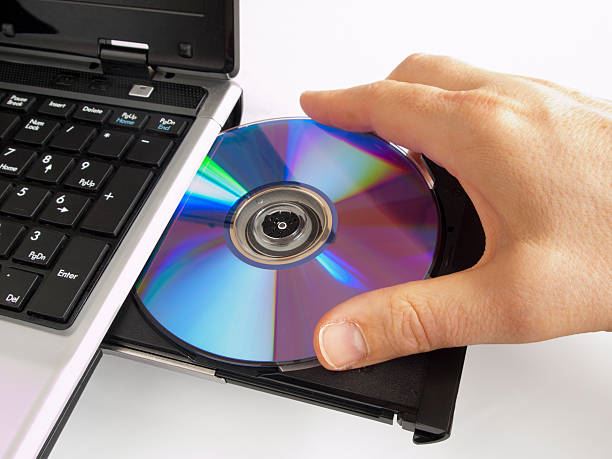 I received a somewhat frantic e-mail recently from a reader of this newsletter. She mentioned a specific genealogy CD-ROM disk, but her question could apply to any CD disk of any topic. She wrote (in part):
I received a somewhat frantic e-mail recently from a reader of this newsletter. She mentioned a specific genealogy CD-ROM disk, but her question could apply to any CD disk of any topic. She wrote (in part):
"Help! I have a CD-ROM disk of [name deleted here] and it cracked. I want to replace it, but can't seem to find it anywhere. Any suggestions? Is there any other CD-ROM that has equivalent materials?"
Sadly, I was not able to offer much help. A cracked CD disk is useless, except maybe as a coaster for your coffee cup. Even a scratch the size of one human hair can render a CD-ROM disk useless; if it has visible physical damage, the problem is even worse. To make matters worse, the company that produced her disk is now out of business, so I doubt if she can find a low-cost replacement. I referred her to eBay to see if she can find a used copy of the same CD for sale.
With a bit of hindsight, anyone can quickly determine what my correspondent SHOULD have done: she should have made a backup copy while the CD was still usable. Then again, how many of us ever do that? I know that I occasionally create CD backups although not as often as I should. (Actually, I stopped purchasing CD-ROM disks several years ago but I still have lots of older disks that have been backed up.)
Such a solution would not have been practical a few years ago. However, nearly all computers built in the past 8 or 10 years contain CD-ROM drives that are capable of writing. The exception is that many of the new home computers no longer contain CD-ROM drives.
In fact, nowadays I no longer recommend making backups to other CD-ROM disks. My suggestion now is to copy a CD-ROM disk to a flashdrive.
Making backups of your CD disks should be a trivial exercise. After all, how much would it cost you to replace a CD-ROM disk that becomes defective?
Most new computers or new CD-ROM drives include software to write to the CDs. In fact, most have an option to copy the entire contents of a disk to a new, blank disk or to a flashdrive. This is true for Windows, Macintosh, and Linux systems. Check the software already installed on your computer; I suspect you will find that you already have everything you need. If not, you can download free software that will make copies for you.
Macintosh users already have the required software: open FINDER, click on APPLICATIONS, click on UTILITIES, and then click on DISK UTILITY. In fact, the Macintosh Disk Utility will duplicate Macintosh, Windows, and Linux disks alike.
A Second Backup Plan
With today's hard drives typically having a storage capacity of a terabyte (1,000 gigabytes) or more, it is now practical to create backup images of CD disks and to store them on a hard drive or on flashdrives. After all, one large hard drive can now store hundreds of CD-ROM disk images. Probably the best method is to create .ISO images of the original CD disks. An .ISO "image" file is a method of merging all the files on a CD into a single compressed file according to a defined format.
You can read more about .ISO images in the Wikipedia article at https://en.wikipedia.org/wiki/ISO_image.
The process is somewhat similar to creating a .ZIP file: many files can be combined into a single file for archival purposes. Having a single file simplifies the issue of maintaining backup copies. When needed, you can extract the .ISO file and copy it back to a new, blank CD-ROM disk that will be identical to the original. ISO images are especially useful when the original CD contains hidden files, a common occurrence. The .ISO files will store hidden and non-hidden files alike without any extra intervention required.
Microsoft does not supply software to create .ISO files. However, most third-party CD and DVD burning utilities will add that capability. If you do not presently own a Windows program that creates .ISO images, InfraRecorder at http://infrarecorder.org/ does a great job of creating ISO disks on Windows systems. Best of all, it is free, open-source software that doesn’t include junkware. Insert a disc, click the “Read Disc” button, and select a source drive to read from and destination ISO file to create.
Macintosh users already have all the software needed to create .ISO files; look at Disk Utility as described earlier. Several free Linux utilities are available to copy disks and to create .ISO files; look for the program called K3B or something similar.
A Word About Copyrights
Anytime you make copies of something, you should stop to think about copyright laws. In the U.S., copyright laws generally allow you to make backup copies of anything you legally own for your own personal use. However, you cannot give or sell copies to anyone else without the copyright holder's permission. As long as you make backup copies and keep them for your own use, you should not have a problem with copyright laws.
Your Action Plans
I'd suggest you look at all the CD-ROM disks you already own. Which ones would be disastrous if they were damaged beyond repair? Make a copy of those disks NOW!
Keep in mind that CD-ROM disks do not last forever. You might want to make new copies every three to five years. It's well worth the small investment of time and blank disks to safeguard your larger investments in software and data CDs!